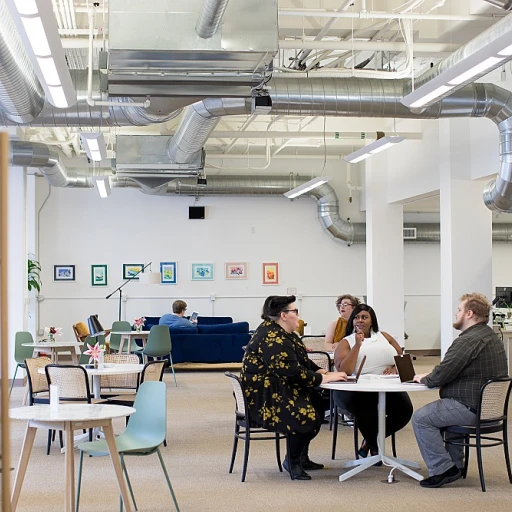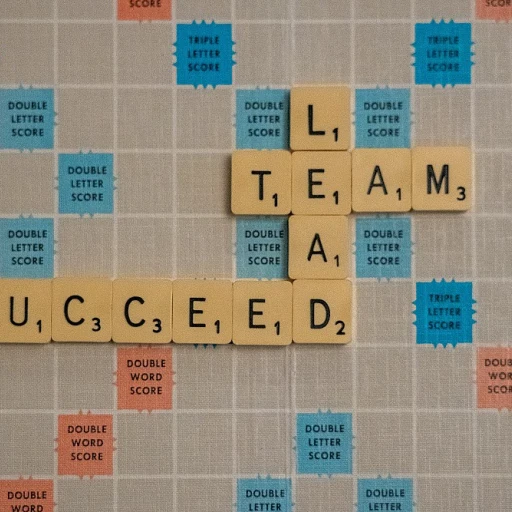Understanding Stakeholder Needs
Recognizing the Core Needs of Stakeholders
Effective communication with stakeholders begins with understanding their needs and expectations. This foundational step is crucial in shaping a successful project trajectory. It is the responsibility of project managers and general managers alike to engage in active listening and gather input from stakeholders to ensure alignment. In the realm of stakeholder engagement, acknowledging the distinct priorities of key stakeholders can lead to more harmonious project management. Each stakeholder brings unique perspectives that can contribute significantly to the overall development of a project. By conducting systematic interactions, managers can identify and prioritize these views, which makes their communication strategies more effective. Para los stakeholders, effective engagement means understanding their desired outcomes and how these align with the overall project goals. This involves delving into their motivations, constraints, and expectations. Transparent communication ensures clarity and fosters a collaborative atmosphere. Moreover, employing social media and digital tools can enhance the depth of stakeholder understanding and keep all parties informed. This approach allows for capturing a wide array of feedback, transforming it into actionable insights that contribute to the success of the project. It's through mediums like social media, where the nuances of stakeholder engagement shine, enabling more inclusive and interactive dialogue. Developing a comprehensive understanding of stakeholders' needs not only sets the foundation for effective communication but also aids in avoiding potential miscommunications that might arise later. For those interested in exploring how engaged listening can revolutionize general management, examining stakeholder feedback loops might provide valuable insights.Building a Collaborative Development Team
Fostering a Collaborative Development Environment
Creating a cooperative atmosphere among a development team can significantly boost productivity and innovation. Here are some strategies to consider:- Inclusive Planning: Involve team members in the decision-making process to ensure they feel valued and heard. This cooperation builds trust and encourages innovation.
- Clear Roles and Responsibilities: Clearly delineate roles to prevent confusion and overlap, ensuring everyone knows their contributions to the project.
- Open Communication Channels: Encourage team members to communicate openly about their ideas and concerns. Facilitate regular check-ins to keep everything on track.
- Skill Development: Investing in training and development can keep team skills updated, fostering a culture of continuous improvement.
Fostering such an environment not only aligns team efforts towards the common goal but also strengthens professional relationships, optimizing the cultivation of stakeholder relationships.
Bridging Communication Gaps
Open lines of communication are crucial for active collaboration and problem-solving. Here are ways to ensure your team bridges any communication gaps:- Leverage Technology: Utilize communication tools that cater to remote and hybrid working models. These digital solutions, like Slack or Microsoft Teams, can streamline communication while integrating social media aspects for wider engagement.
- Regular Updates: Keep key stakeholders informed with regular updates on project progress. This transparency reinforces trust and aligns expectations.
- Feedback Loops: Establish structured feedback mechanisms to understand better and respond to project challenges. These loops enhance communicacion between the development team and stakeholders.
A strategic approach to managing communication ensures that all partes interesadasparties involved, including stakeholders and development teams, are aligned in understanding objectives, outcomes, and changes in the project.
Bridging the Communication Gap
Achieving Synergy in Interactions
Effective communication between stakeholders and the development team is paramount to the success of any project. It's not uncommon for there to be a gap between what key stakeholders expect and what the development team can deliver. Bridging this divide requires a deliberate approach to understanding both sides. The project manager plays a vital role in facilitating these interactions by ensuring all parties are aligned in their goals. This includes actively engaging stakeholders through various communication strategies implemented in the initial phases of project management. Leveraging different communications channels, including social media and digital platforms, can enhance engagement with partes interesadas (stakeholders), allowing for real-time feedback and adaptations. Social media, in particular, provides a platform for ongoing engagement, ensuring that the right messages are reaching las partes (all interested parties).Developing a Holistic Communication Approach
Customizing communication tailored to the individual needs of various stakeholders ensures clarity and understanding. Project managers should establish different forms of communication such as regular meetings, written reports, and digital updates. A successful communication strategy includes clearly defined roles and responsibilities within del equipo (the team), ensuring every member is aligned towards the common objective. Como los alumnos in a classroom, stakeholders need clear, concise, and frequent updates to keep their interests aligned with the project's goals. Effective communication mitigates the risk of misunderstandings and fosters a collaborative environment among all project participants.Encouraging Open Dialog
Creating opportunities for open discussion is critical. It allows for the airing of concerns and the identification of potential solutions that benefit both los (the) stakeholders and the development team. By promoting open dialog, a project manager can ensure the project remains on track and is responsive to any required changes, enhancing the gestion del producto (product management). For more insights on building successful communication strategies, see how to cultivate innovation in talent management for comprehensive management solutions.Utilizing Technology for Better Communication
Embracing Advanced Digital Tools
In today’s fast-paced business environment, leveraging technology has become pivotal for effective communication within project teams and among stakeholders. Digital tools are transforming how managers engage with both their development teams and stakeholders, by streamlining communication processes and enhancing transparency. Firstly, project management software such as Trello, Asana, or Jira provides a centralized platform for tracking project progress and deadlines. These tools are invaluable for keeping los equipos de desarrollo on the same page, ensuring everyone is informed of their responsibilities and timelines. Such platforms also facilitate task assignment and priority setting, amplifying the alignment of goals among all team members involved. Moreover, adopting digital media tools like Slack and Microsoft Teams enhances the immediacy and effectiveness of communication. These applications offer real-time messaging capabilities alongside file sharing, video calls, and even integrations with other tools. Para los project managers, this means more efficient team collaboration without the barriers of traditional methods, allowing for swift exchanges and feedback that can empower faster decision-making. Social media platforms also play a significant role in maintaining open channels with key stakeholders. By utilizing redes sociales for stakeholder engagement, managers can foster a community-centric approach, where updates and insights about del producto are shared efficiently. This transparency builds trust, as stakeholders are made to feel part of the project's journey, rather than mere observers. Furthermore, relying on video conferencing tools like Zoom or Google Meet makes it easier to conduct meetings with stakeholders scattered across different locations. This not only saves time but also reduces costs associated with travel. Through effective use of these tools, las empresas como those in digital marketing can maintain robust communication strategies that cater to the diverse needs of all involved parties. In conclusion, the integration of digital technologies into daily operations of project management and stakeholder communication enhances overall efficiency. Project managers who embrace these advancements will likely see improvements in their team's productivity and a stronger connection with stakeholders, paving the way for successful project outcomes. As we explore different facets of stakeholder management, understanding how to leverage these tools effectively is crucial in building a cohesive strategy.Managing Conflicts and Expectations
Strategies for Conflict Resolution and Managing Expectations
Effectively communicating with stakeholders and the development team doesn't always mean that there won't be any conflicts. However, the way these situations are managed can significantly impact the project's success. Here are some essential strategies for managing conflicts and expectations:- Active Listening and Empathy: One of the most effective ways to manage conflicts is by actively listening to all parties involved. This means allowing stakeholders and team members to express their concerns without interruption and showing empathy towards their perspectives. Approaching conflicts with empathy helps in de-escalating tensions and establishes a foundation for resolution.
- Clarification and Transparency: Misunderstandings often arise from unclear communication. Clarifying any ambiguity and ensuring that all parties have a transparent understanding of the project's goals, expectations, and constraints is crucial. This prevents recurrence of similar issues in future stages of project management.
- Regular Updates and Feedback: Keeping stakeholders informed through regular updates ensures that they are aware of the project's progress and any challenges being faced. This facilitates realistic expectation management, as stakeholders are less likely to be surprised by outcomes that differ from their assumptions.
- Mediating Conflicts: Sometimes, conflicts between stakeholders and development teams may require mediation. Managers should be prepared to take on this role or bring in a neutral third party to resolve issues impartially. This ensures that conflicts do not derail the project.
- Culture of Mutual Respect: Building an organizational culture where mutual respect is paramount can help prevent conflicts. Encouraging open dialogue and respect for diverse views among stakeholders and team members fosters a cooperative environment.







